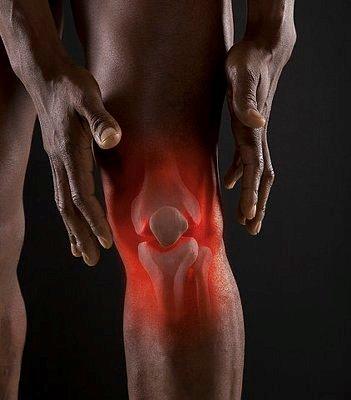Do you suffer with Knee Pain?

DO YOU SUFFER WITH symptoms of pain in your knee when
- getting up from a chair, out of your car or our out of bed in the morning?
- squatting down to pick something up from the floor?
- walking up or down stairs?
Knee pain accounts for approximately one third of musculskeletal problems seen in primary care settings. This complaint is most prevalent in physically active patients, with as many as 54 per cent of athletes having some degree of knee pain each year.¹
ANATOMY
The knee is the largest joint in the body. The upper and lower bones of the knee are separated by two discs (menisci). The upper leg bone (femur) and the lower leg bones (tibia and fibula) are connected by ligaments, tendons and muscles. The surface of the bones inside the knee joint is covered by articular cartilage which absorbs shock and provides a smooth, gliding surface for joint movement.

SYMPTOMS
Include, but not limited to:
- Swelling and stiffness
- Redness and warmth to the touch
- Weakness or instability
- Popping or crunching noises
- "Locking" or inability to fully straighten the knee.
CAUSES
Many different causes may result in knee pain. These include, but are not limited to:
- Sudden injuries such as a direct trauma to the knee, an abnormal twisting, bending or falling on the knee.
- Overuse injuries resulting from repetitive activities such as bicycle riding, stair climbing, jogging and jumping.
- Arthritis
- Iliotibial Band Syndrome - This occurs when the ligament that extends from the outside of your pelvic bone to the outside of your tibia (iliotibial band) becomes so tight that it rubs against the outer portion of your femur. Distance runners are especially susceptible to iliotibial band syndrome.
- Torn meniscus (“Crescent” shaped…a rubbery disc that cushions your knee)
- Chondromalacia patellae (patellofemoral pain syndrome). This is a general term that refers to pain arising between your patella (knee cap) and the underlying thighbone (femur) as well as swelling and stiffness, redness and warmth to the touch, weakness or instability, popping or crunching noises, “locking” or inability to fully straighten the knee.
SOURCES
- Rosenblatt RA, Cherkin DC, Schneeweiss R, Hart LG.
The content of ambulatory medical care in the United States. An interspecialty comparison.
N Engl J Med 1983;309:892-7. - Wertz, Robert, DC, Seminars and personal communication.
CALL TODAY for a consultation:
Thomas Liberto, LMT, Personal Trainer
Lake Worth, FL 33460
Telephone: 561-420-3272
Email: thomas@libertotherapy.com